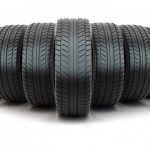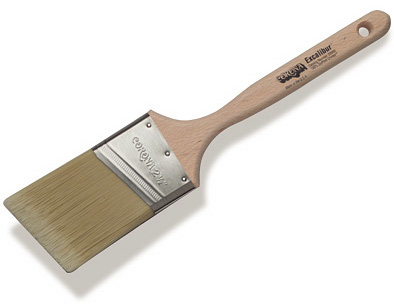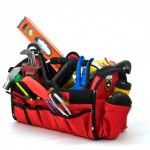 This past Wednesday, I woke up and did what many of you likely did: I looked out the window. I had listened to the weather reports all week and I wanted to see if we received as much snow as the Doomsayers had predicted.
This past Wednesday, I woke up and did what many of you likely did: I looked out the window. I had listened to the weather reports all week and I wanted to see if we received as much snow as the Doomsayers had predicted.
Unfortunately, I couldn’t see much from the window–it looked bad, but not as bad as I had feared. So, buoyed with hopeful thoughts, I got dressed, put on my gloves, my little snowpants, my little coat and hat and all that stuff and headed outside to snowblow and clean out the driveway.
However, when I got outside, I very quickly realized that the situation was infinitely worse than I had thought: my car was buried so deep I couldn’t open the doors. My shovel (and here I’d like to give a special thank you to my children) was in the yard. Somewhere. Beneath 20 inches of snow. Thankfully, we have a second shovel.
Unfortunately, it too was in the yard. Somewhere. Beneath 20 inches of snow.
Well, after my initial . . . shall we say, disappointment . . . I decided it was alright. Everything was cool. Everything was groovy. I mean really, with all that snow, I wasn’t going to be digging my way out anyway, right? Right. That’s why I have a snowblower.
And so I marched (like Frodo in the Lord of the Rings) through a vast expanse of waist-deep snow, all the way to our little storage barn. After a brief (and occasionally loud) struggle, I managed to muscle open the doors, only breaking them a little. But I didn’t care about that. I didn’t care about doors that were only a little bit broken because I was staring at my snowblower: a machine of glory and power–a machine that would soon free my driveway from the clutches of . . . well you get the idea.
Anyway, I reached for the pull cord to power the machine into action and remembered something sad: two weeks ago I had ripped off the pull-cord that starts the blower. So, no pull-starting it. I’d have to use the electric start. So no big deal, right? No big deal.
Well, not exactly. See, there was a slight problem: my cord for the electric start was 10 feet long and my power outlet was sixty feet (through waist-deep, Lord of the Rings, Epic snow) away.
Well, never being one to think overly long about a problem, I did what any guy would do: I started dragging the snowblower backwards through the all that snow. I went all of about 4 feet when I realized I’d never make it alive. And then (finally) my brain kicked in and said “Dummy. Go get your shovel.”(I think, though I’m not yet sure, that my brain was messing with me).
So I slapped my forehead and said out loud, “my shovel! I’ll shovel out a path to the power outlet!” I belly-crawled through the snow all the way to where I’d left my shovel only to remember that very sad truth I relayed earlier: my shovels were (thanks again, kids) buried in the yard somewhere.
At this point, anger and sadness were descending on me, burying my spirits quicker and more effectively than the snow had taken care of my tools, but I dug deep and (after kicking the trashcan and falling down in a snowdrift and hitting my head on the van when I fell over), I went back to dragging the snowblower towards the house.
Yeah, I pulled on that thing like I was a little Hercules and managed to drag it another 4 feet before I felt what could only be the onset of 4 hernias and a heart attack.
Sitting down in the snow, holding my side, huffing and puffing, inspiration FINALLY struck: my power cord was 10 feet long and the power outlet was still about 52 feet away . . . but I had something in my basement that we in the modern world call an extension cord.
So I ran in, grabbed the cord and in minutes had started the snowblower. But, sadly, that was only half the battle. Now I had to somehow blow all this snow away.
Well, for the longest time (and this is the whole point of this story) I just stood there, breathing the fumes coming off the snowblower and wondering how long it would take just for Spring to melt it all. The job, now that I was finally ready to start it, seemed too big. Too enormous. Too overwhelming. I seriously wondered if I’d even be able to get it with the snowblower. I moved my hand to the throttle of the machine, fully intending to shut it down and just go in the house and think about it for a while.
But then, just before I did that–before utter helplessness kicked in and took over–I put the blower in gear and cleared a 2 foot section.
It was a start.
I then wiggled the machine around and cleared out another section. Before long, I had an eight foot section cleared and I’d found one of the shovels. Or, at least most of it.
From there, I chipped away at the driveway. It didn’t go smoothly and it didn’t go quickly, but I got it done. Eventually.
And that brings me back to what I started writing about the other day: de-cluttering our fat homes. See, in the next few days, I’ll be writing about some tried and true tricks to getting your house de-cluttered. But before I start that, I want to start by focusing on very first problem we all need to overcome when attempting to get the clutter out of our homes: the paralysis brought about by the immensity of the job.
See, just as I stared at the driveway and almost didn’t know where to begin, many of us do the same thing when it comes to de-cluttering our homes. The job looks too huge. We stand there and stare at it and wonder if there’s any possible way to accomplish all the work. We almost become paralyzed.
Well, the first tip I’m going to give you is buried in the snow story: start small. Start with that first 2 foot section if you have to, but find somewhere to start and start.
Don’t waste your time staring. Don’t waste your time and your energy gawking at the work. If you do that, you’ll never start. You’ll talk yourself right out of it.
Don’t look at the attic and basement and closets and the cupboards and the drawers and the dressers that need to be sorted and organized. Start with a single box in a single closet and focus on that, organize that. Then move on to the next one. Before long, the closet will be done and you’ll be able to close the door and move on to another one. When that one’s done, you’ll be able to move on to the next and so on.
Eventually, you’ll work your way through it all. But only if you start. That’s the first step: start. That’s the way to defend against the paralysis.
Next time we’ll talk about some tips and tricks to help you with the actual work.





 I drive an old car. An OLD car. It’s a 1996 Chevy Cavalier. It’s purple. It used to be my wife’s. And yet, even though it has all that going against it–even though it’s probably one of the least “manly” cars you’re likely to see on the road–I continue to drive it. The reasons? It’s paid for and it continues to run.
I drive an old car. An OLD car. It’s a 1996 Chevy Cavalier. It’s purple. It used to be my wife’s. And yet, even though it has all that going against it–even though it’s probably one of the least “manly” cars you’re likely to see on the road–I continue to drive it. The reasons? It’s paid for and it continues to run.
 On New Year’s Eve this year, my wife bought two bottles of Sparkling Grape juice. And as I popped them open at 12:01 am on January 1, I was suddenly reminded of a memory from my childhood.
On New Year’s Eve this year, my wife bought two bottles of Sparkling Grape juice. And as I popped them open at 12:01 am on January 1, I was suddenly reminded of a memory from my childhood.
 This is Tessa. She looks cute, I’ll give her that. But behind those eyes lurks a bizarre sense of humor and a complete lack of fear and forethought.
This is Tessa. She looks cute, I’ll give her that. But behind those eyes lurks a bizarre sense of humor and a complete lack of fear and forethought. Well, everything went well: I finished the project quickly and started to wash out my new brush and put my stuff away for the night. I had only run the brush under the tap for about 30 seconds when one of the kids hollered for my attention. When they didn’t quit, I quickly spun the brush in my hands to remove the excess water and I set it on the counter planning to come back later and rinse it a little better.
Well, everything went well: I finished the project quickly and started to wash out my new brush and put my stuff away for the night. I had only run the brush under the tap for about 30 seconds when one of the kids hollered for my attention. When they didn’t quit, I quickly spun the brush in my hands to remove the excess water and I set it on the counter planning to come back later and rinse it a little better. Now, this is Hannah. She’s 3 years old. Would you listen to Hannah if she told you to do something? No. Nobody in their right mind would listen to Hannah on matters of grave importance. Why Tessa routinely chooses to listen to her is something that I cannot even begin to understand. However, at that particular moment, I wasn’t even thinking about it. I was thinking about all the different tricks I know to help me get black paint out of light fabric. That is, I was thinking about those things until I got to the chairs and noticed something amazing: they were completely clean.
Now, this is Hannah. She’s 3 years old. Would you listen to Hannah if she told you to do something? No. Nobody in their right mind would listen to Hannah on matters of grave importance. Why Tessa routinely chooses to listen to her is something that I cannot even begin to understand. However, at that particular moment, I wasn’t even thinking about it. I was thinking about all the different tricks I know to help me get black paint out of light fabric. That is, I was thinking about those things until I got to the chairs and noticed something amazing: they were completely clean.
 ROLLER FRAMES. We recommend that you have at least one 9" roller frame and one 4" roller frame in your kit. Most folks already have one or more of these, but if you don't, then you'll want to make sure you pick up one or more. Having a 9" roller frame is great for those larger areas you need to paint. And the 4" frame is perfect for small jobs and touch-ups.
ROLLER FRAMES. We recommend that you have at least one 9" roller frame and one 4" roller frame in your kit. Most folks already have one or more of these, but if you don't, then you'll want to make sure you pick up one or more. Having a 9" roller frame is great for those larger areas you need to paint. And the 4" frame is perfect for small jobs and touch-ups. ROLLER COVERS. Well, it doesn't take a rocket scientist to see that your roller frames are only going to be useful if you've got a couple covers to go on them. At RepcoLite, we recommend that you have at least one 9" cover and one 4" cover on hand at all times. And, if at all possible, make sure they're new. Used roller covers can work out OK for priming, but if you're trying to do any touch-ups or repainting, you'll want a brand new roller cover.
ROLLER COVERS. Well, it doesn't take a rocket scientist to see that your roller frames are only going to be useful if you've got a couple covers to go on them. At RepcoLite, we recommend that you have at least one 9" cover and one 4" cover on hand at all times. And, if at all possible, make sure they're new. Used roller covers can work out OK for priming, but if you're trying to do any touch-ups or repainting, you'll want a brand new roller cover. 9" ROLLER TRAYS. Most folks have a roller tray or two sitting around in their basement or their work room or possibly even their garage. However, if you're not one of those people, then get your hands on one. You could purchase a standard metal tray (which works well with cheap, disposable tray liners) or you could opt for a cheaper plastic tray like the one pictured at the left.
9" ROLLER TRAYS. Most folks have a roller tray or two sitting around in their basement or their work room or possibly even their garage. However, if you're not one of those people, then get your hands on one. You could purchase a standard metal tray (which works well with cheap, disposable tray liners) or you could opt for a cheaper plastic tray like the one pictured at the left. 4" ROLLER TRAY. Besides making sure you have a standard 9" roller tray on hand, you should also buy a handful of disposable 4" trays as well. These 4" trays are great for all sorts of little touch-up work and other small projects. They clean up well and will easily last you through 3 or more paint jobs. Best of all, they usually retail for just over $1.00.
4" ROLLER TRAY. Besides making sure you have a standard 9" roller tray on hand, you should also buy a handful of disposable 4" trays as well. These 4" trays are great for all sorts of little touch-up work and other small projects. They clean up well and will easily last you through 3 or more paint jobs. Best of all, they usually retail for just over $1.00. THE CHINEX EXCALIBUR BRUSH from CORONA. OK, this is the one area where we'd recommend that you splurge a little. This brush from Corona is comprised of special filaments that are chemically engineered to release latex paints. This means a couple of things. First, the brush will apply latex paints remarkably well. Secondly (and more importantly, in my book), this means the brush will clean up easily. Literally, you can swirl this brush around in a bucket of water for about 30 seconds and then run it under a tap for 10-15 seconds more and it will be perfectly clean. That's why we recommend it for your "Emergency Kit". The ease with which it cleans up makes it less of a pain for you to switch colors and accomplish multiple little touch-ups quickly and easily.
THE CHINEX EXCALIBUR BRUSH from CORONA. OK, this is the one area where we'd recommend that you splurge a little. This brush from Corona is comprised of special filaments that are chemically engineered to release latex paints. This means a couple of things. First, the brush will apply latex paints remarkably well. Secondly (and more importantly, in my book), this means the brush will clean up easily. Literally, you can swirl this brush around in a bucket of water for about 30 seconds and then run it under a tap for 10-15 seconds more and it will be perfectly clean. That's why we recommend it for your "Emergency Kit". The ease with which it cleans up makes it less of a pain for you to switch colors and accomplish multiple little touch-ups quickly and easily. SPACKLING COMPOUND. Another key component for your "Home Repair Emergency Kit" is an 8 oz containter of White Lightning Lightweight Spackling Compound. It's easy to work with, it dries quickly and resists shrinking and, best of all, it's a breeze to sand! Having a tub of this stuff on hand at all times means you're always ready to patch a ding in your drywall or fill nail holes.
SPACKLING COMPOUND. Another key component for your "Home Repair Emergency Kit" is an 8 oz containter of White Lightning Lightweight Spackling Compound. It's easy to work with, it dries quickly and resists shrinking and, best of all, it's a breeze to sand! Having a tub of this stuff on hand at all times means you're always ready to patch a ding in your drywall or fill nail holes. PUTTY KNIVES. If you're going to stock up on a little bit of spackling compound, then you better get a few putty knives to go with it. Now, if you want some high-quality knives, you can buy them at RepcoLite for about $5.00 - $7.00 or so. But if you want something cheaper for your "Emergency Kit", look into the plastic knives we stock. Oh, they're not going to last forever, but if you're just filling a few holes or doing a little puttying, they'll be fine. You can purchase them in 1", 2" and 3" sizes--each one less than $1.00.
PUTTY KNIVES. If you're going to stock up on a little bit of spackling compound, then you better get a few putty knives to go with it. Now, if you want some high-quality knives, you can buy them at RepcoLite for about $5.00 - $7.00 or so. But if you want something cheaper for your "Emergency Kit", look into the plastic knives we stock. Oh, they're not going to last forever, but if you're just filling a few holes or doing a little puttying, they'll be fine. You can purchase them in 1", 2" and 3" sizes--each one less than $1.00. 6" and 10" JOINT KNIVES. However, though plastic knives will work out alright for most patching work, you'll probably want to invest in one or two drywall joint knives. These are 6" or 10" knives that run between $4.50 and $7.25 and they're very handy to have if you're filling any large areas--a definite must-have in your kit.
6" and 10" JOINT KNIVES. However, though plastic knives will work out alright for most patching work, you'll probably want to invest in one or two drywall joint knives. These are 6" or 10" knives that run between $4.50 and $7.25 and they're very handy to have if you're filling any large areas--a definite must-have in your kit. TAPE. Always have a roll of safe-release painter's blue tape from 3M around. Sure, you could purchase cheaper rolls of tape, but the safe-release tape is nice because it can be used on so many different surfaces. It's the only tape I know of that can perform well on walls, trim, freshly painted areas, and wallpaper. Regular tape is limited as to where it can be used, but the safe-release 3M tape can be used in almost any situation you encounter. And, as an added benefit, this tape offers remarkably crisp cut-in lines.
TAPE. Always have a roll of safe-release painter's blue tape from 3M around. Sure, you could purchase cheaper rolls of tape, but the safe-release tape is nice because it can be used on so many different surfaces. It's the only tape I know of that can perform well on walls, trim, freshly painted areas, and wallpaper. Regular tape is limited as to where it can be used, but the safe-release 3M tape can be used in almost any situation you encounter. And, as an added benefit, this tape offers remarkably crisp cut-in lines.  DROPCLOTHS. Besides masking tape, we'd also recommend that you purchase a 12' x 15' or so plastic dropcloth. These aren't expensive and they can be used for any number of little jobs that come up: from protecting your floors while you're painting to protecting your furniture from dust if you're doing any remodeling.
DROPCLOTHS. Besides masking tape, we'd also recommend that you purchase a 12' x 15' or so plastic dropcloth. These aren't expensive and they can be used for any number of little jobs that come up: from protecting your floors while you're painting to protecting your furniture from dust if you're doing any remodeling. SANDPAPER. One of the easiest tools to overlook is sandpaper, yet it's something that we used in many typical home repair projects. Whether you're repainting, patching walls, or painting furniture, sandpaper plays a critical role in the process. So get your hands on six to ten sheets of 220 grit, 150 grit, and 120 grit paper. Those are the most commonly used grits and having a stock of each one on hand will help you out immensely.
SANDPAPER. One of the easiest tools to overlook is sandpaper, yet it's something that we used in many typical home repair projects. Whether you're repainting, patching walls, or painting furniture, sandpaper plays a critical role in the process. So get your hands on six to ten sheets of 220 grit, 150 grit, and 120 grit paper. Those are the most commonly used grits and having a stock of each one on hand will help you out immensely.